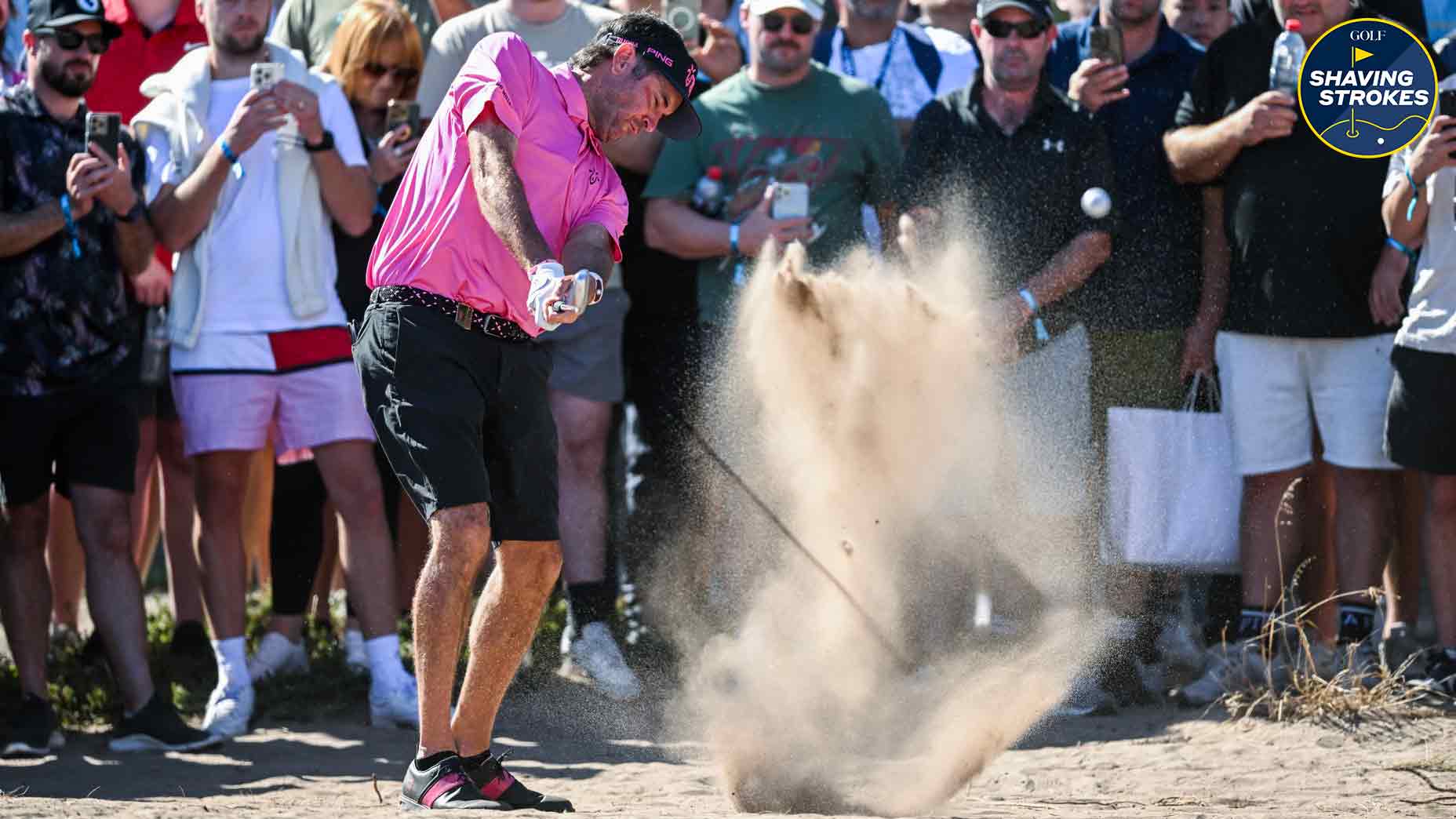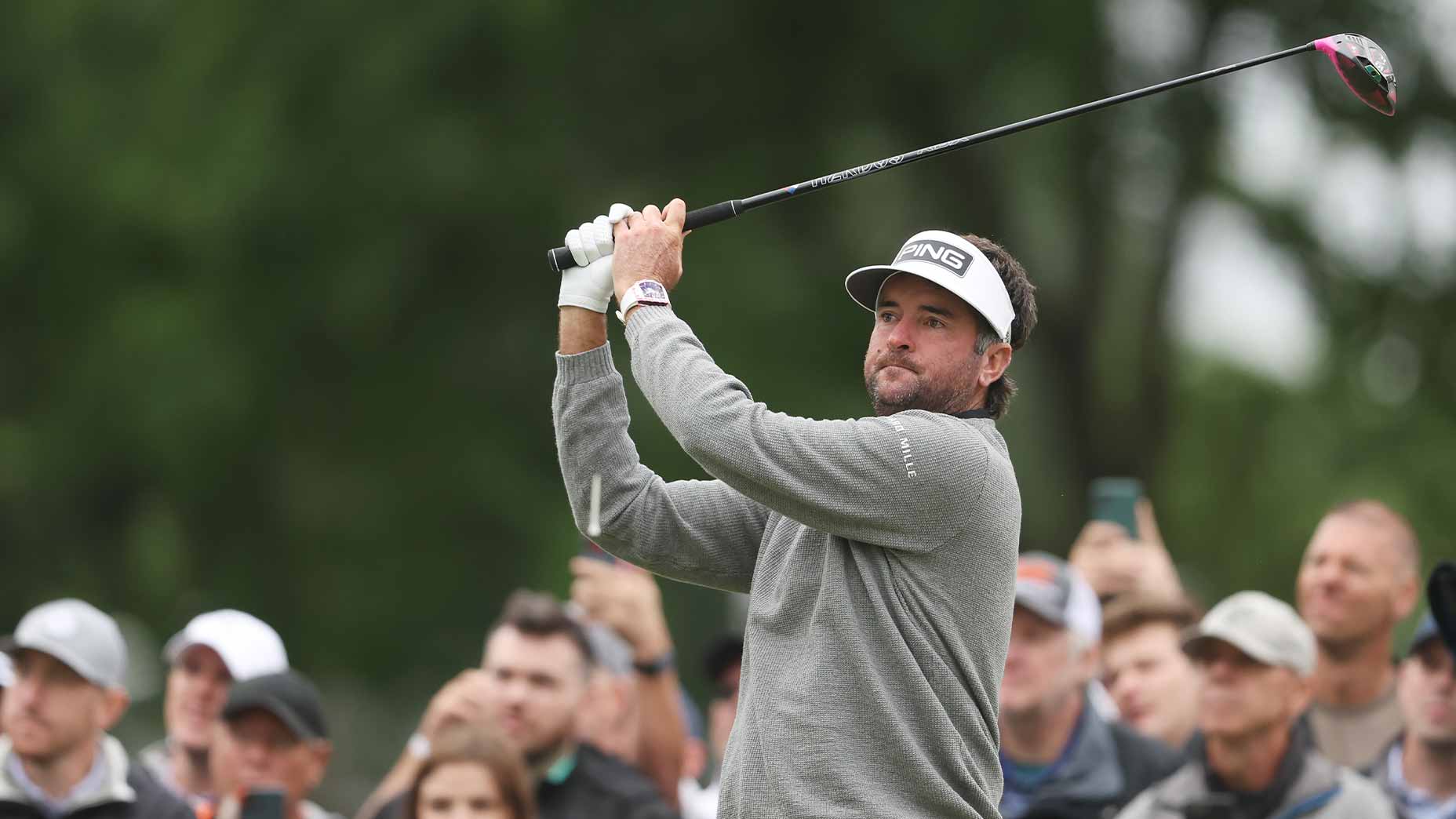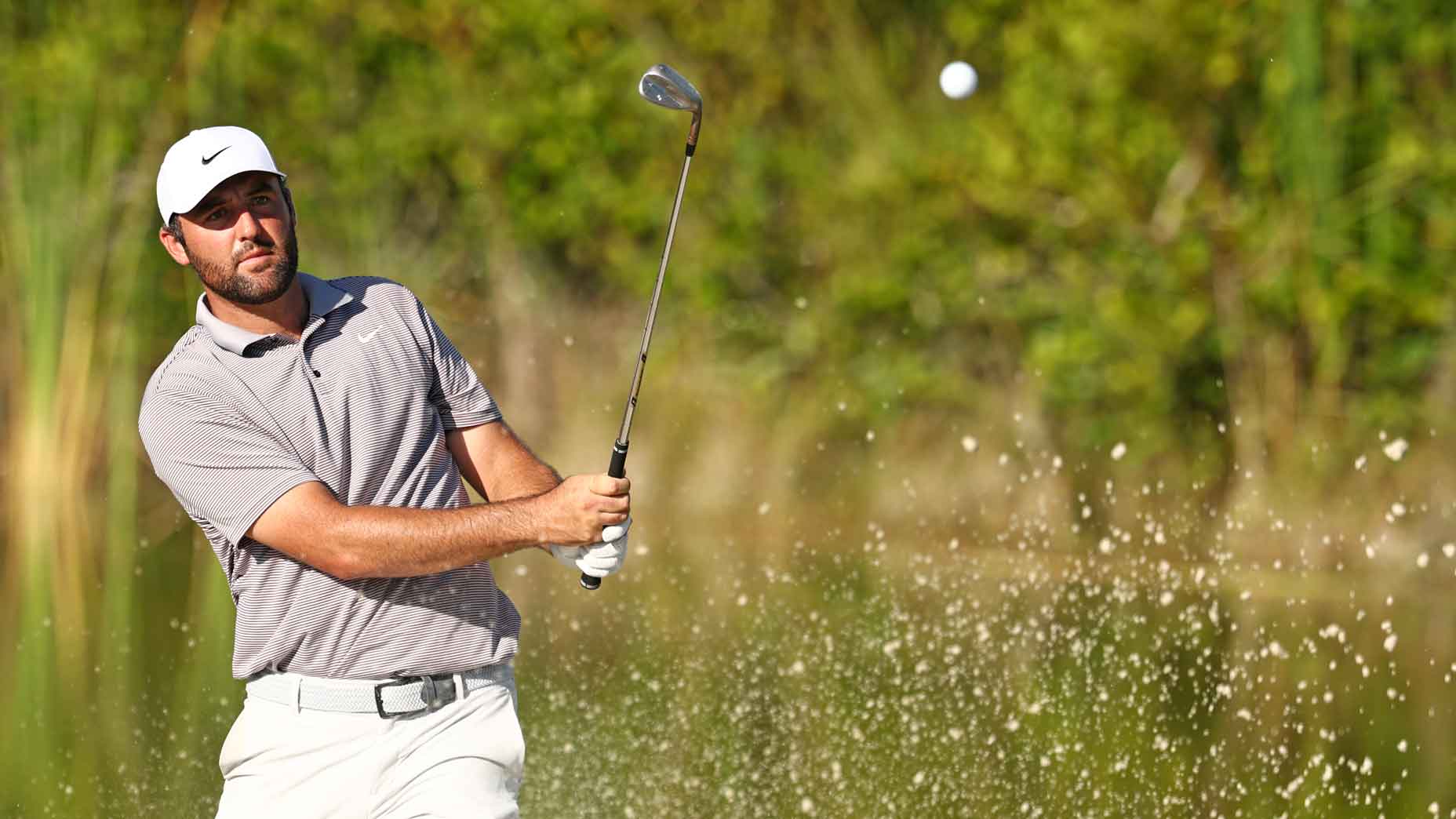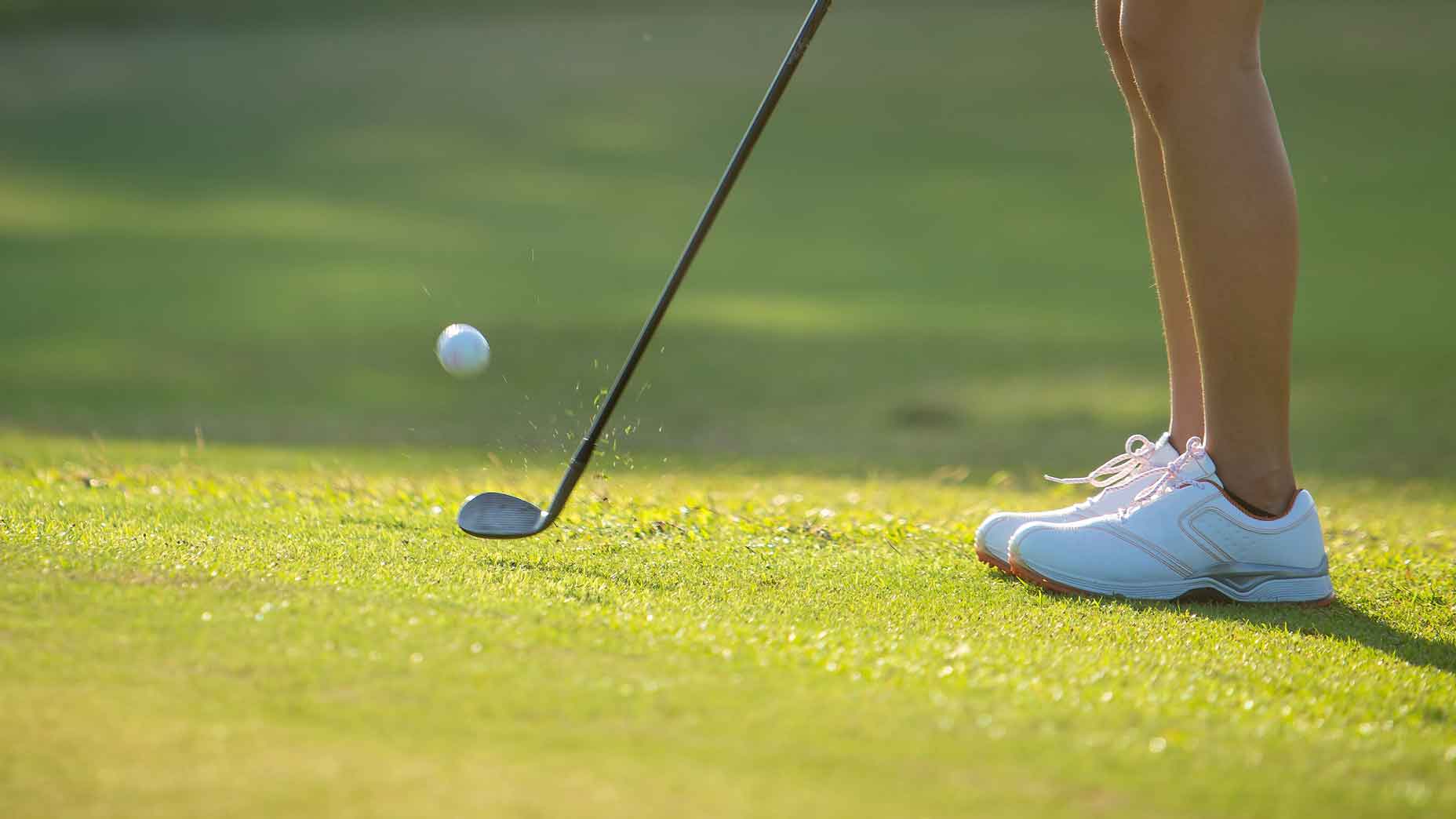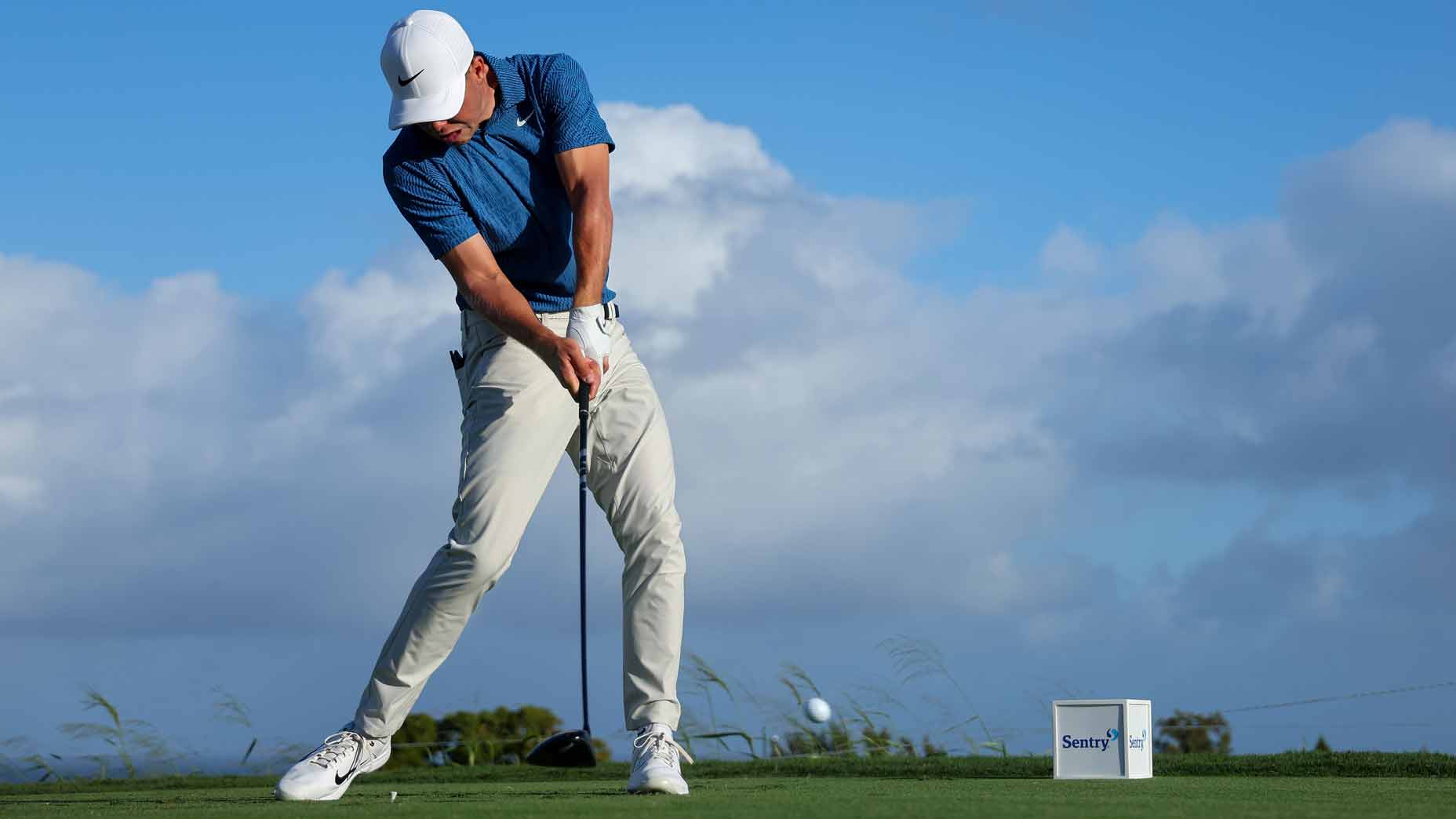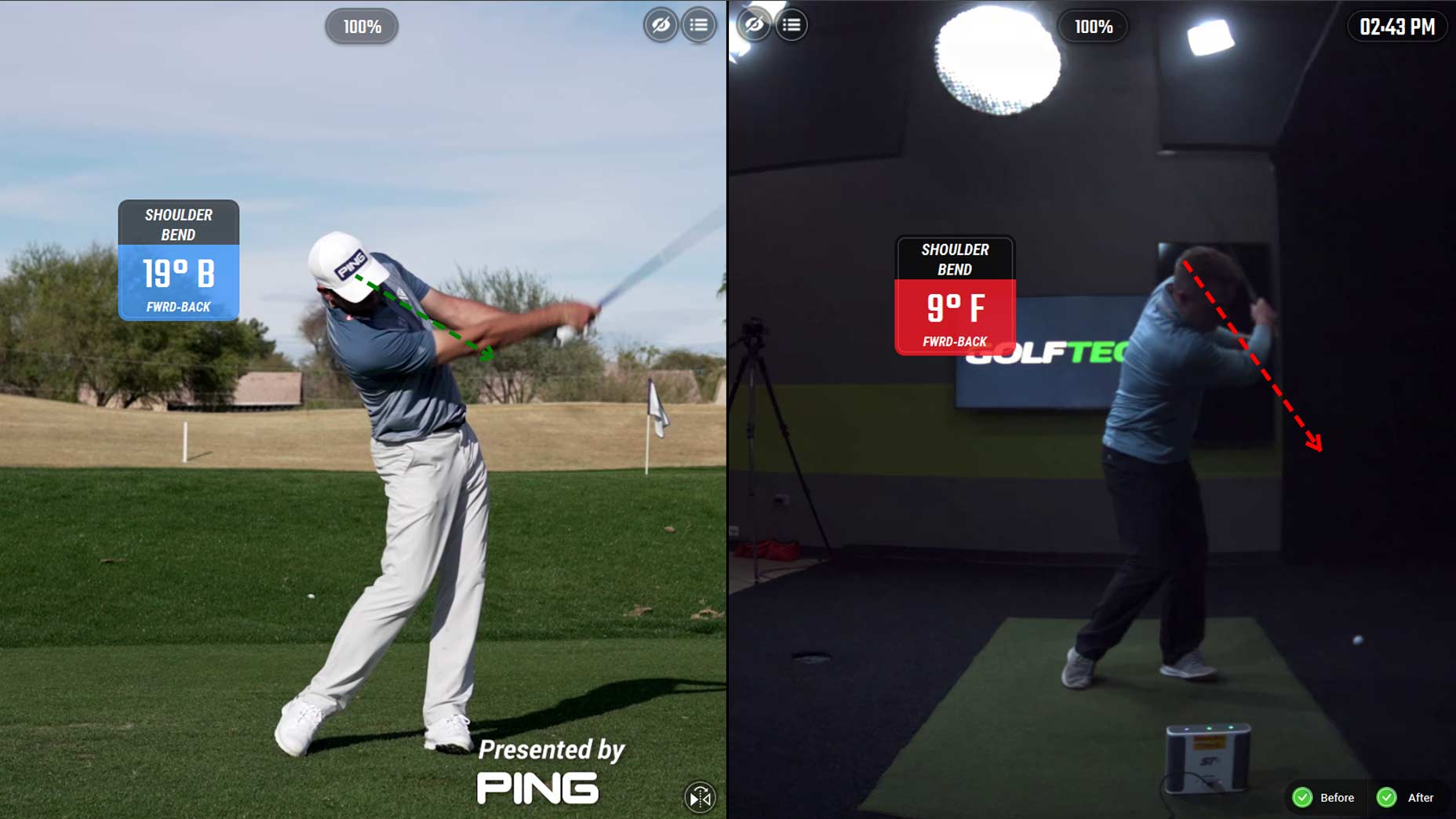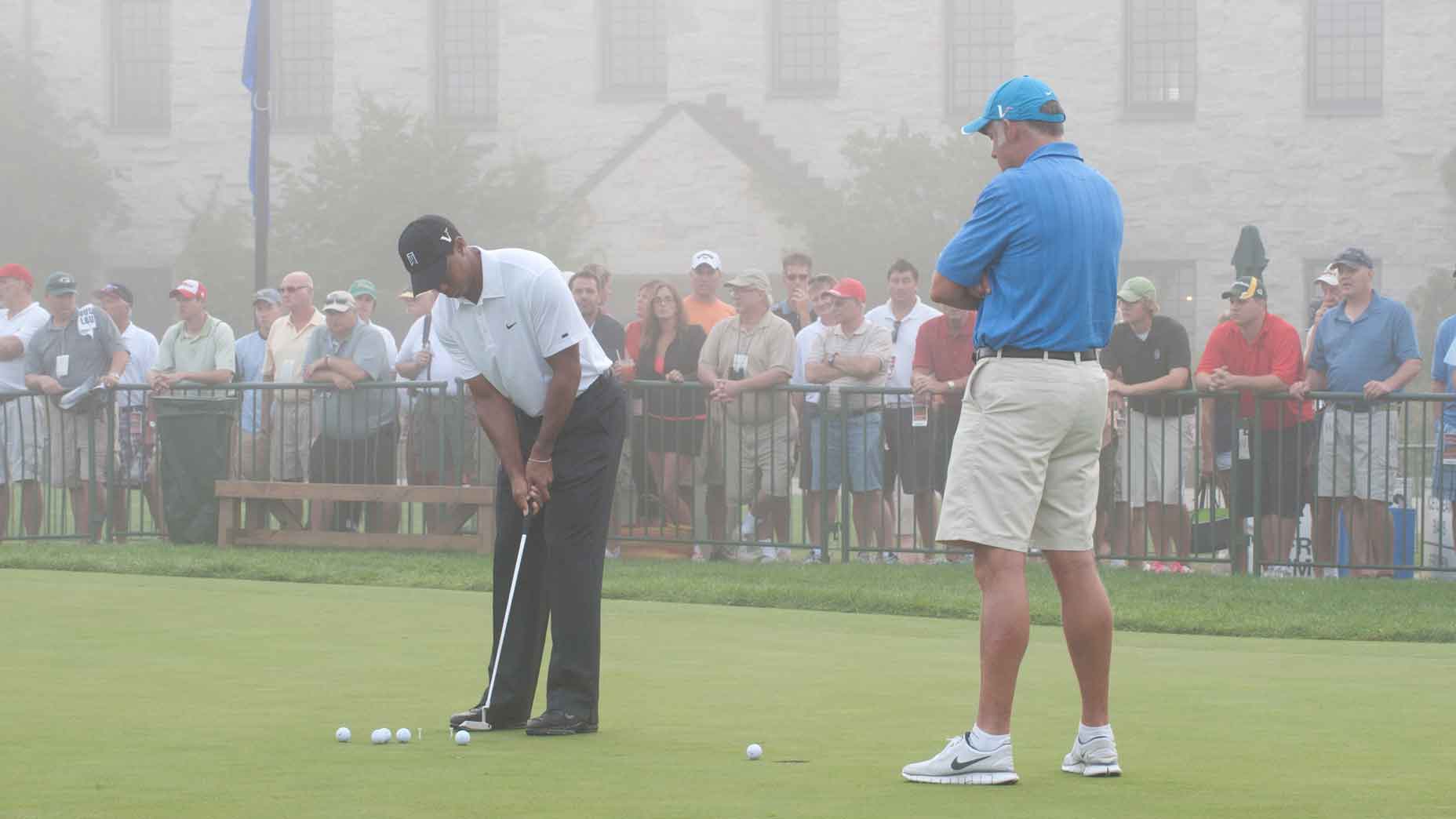Welcome to Shaving Strokes, a GOLF.com series in which we’re sharing improvements, learnings and takeaways from amateur golfers just like you — including some of the speed bumps and challenges they faced along the way.
If you’re anything like me, you definitely need some tips on how to hit recovery shots. You know, the ones where you miss the fairway, spend a few minutes walking up and down the tree line searching for your ball, and then, upon finding it, realize you’ve got a really tricky second shot.
This recovery shot was so good I don’t even understand how it’s possibleBy: Luke Kerr-Dineen
In these types of situations, the golf gods always seem to punish players in the worst way, subjecting a mid-handicapper like myself to a lie in a divot, on top of a tree root, or sitting in some deep rough.
So what’s an amateur golfer to do?
Rather than feel lost without any sort of plan for this scenario, two-time major champ Bubba Watson’s here to give a few tips to help you have success when you come across this scenario.
In the video below (courtesy of LIV Golf’s YouTube channel), Watson explains some important keys to remember prior to hitting a recovery shot, and then dives into what’s necessary in order to execute the one you draw up in your mind.
Bubba Watson shares his tips for an expert recovery shot
As most of us know, Watson is one of the kings at hitting recovery shots. While a few memorable ones stand out in his career, his most legendary one came during the second playoff hole on No. 10 at the Masters in 2012, when he hit a 52-degree wedge from the rough while beneath some trees. That shot helped propel the crafty lefty to his first-ever green jacket.
So what secrets does Watson have to help the everyday golfer improve at recovery shots? He first reminds players to practice from nasty lies — something he’s done ever since he was a kid.
“Practice drills for tough situations,” he says. “I put the ball in divots, in high grass, in trees, pretty much everywhere. My dad said, ‘why practice on good grass? Why not practice all the other shots?'”
But practicing and performing on the course are two different things, so Watson says that doing the following five things is the best way to see success on recovery shots.
The ridiculous reason Bubba Watson *intentionally* drove into the rough at the PGA ChampionshipBy: James Colgan
Weigh risk vs. reward
“If you’re like me and miss fairways, this [recovery shot] is where the creativity comes out. This is where you have the most fun,” Watson says.
But just because this is your time to get a little funky doesn’t mean you can get careless with your decision-making. So Watson suggests weighing risk versus reward, making sure you understand the consequences if you’re too aggressive.
“The first thing you need to ask yourself is how you want to recover,” he adds. “Do you want to play it safe and just try to save whatever strokes you can, or do you want to attack it and try to pick up a shot? You have to decide those things.”
Stay in the moment
Many times, amateurs often think about the worst thing that can happen on a tricky recovery shot. When that happens, their body tenses up, they don’t trust their fundamentals, and they often hit a poor shot as a result.
Watson says you need to block out those external factors and stay in the moment.
“When you’re in trouble, you can’t start thinking about the future,” Watson explains. “When you start thinking about the trees, start thinking about any water or sand traps or out of bounds, then you’ve already thought about the wrong things.”
Watson quips about not necessarily being good at that himself, so he understands how tough of a skill it is to develop.
“You have to focus on what you’re doing at that moment. I’m not very good at that either, and I’m trying to learn that,” he adds. “It’s something you have to do, though. Just stay in the moment, in the shot, in the swing and focus on your target.”
Control your ball flight
On the shot in the video, Watson has about 160 yards to the green. But his ball is resting on some pine straw with a couple of trees obstructing his view and ball flight, so he needs to make sure he keeps his shot low to get to where he envisions it.
“You’ll need to hit the ball low to get out of the trouble, so you don’t want to hit it too high and hit it into the branches [when you’re beneath any trees],” Watson says.
He then describes the reason he uses an 8-iron on that specific recovery shot, talking about both the yardage and the angle of attack he uses to controll his ball flight.
“The reason I use an 8-iron is because, without even thinking about, it makes me come down steeper on the ball so I can hit it lower,” he adds. “If I have a 4-iron or a 5-iron, I lose that [mental] edge of just hitting and coming down on it.”
Read the lie and adjust ball position accordingly
“On this one, put the ball a little back in your stance so you can keep it lower, and then I just want to turn it over a little bit [to help it draw],” he says.
A go-to guide for conquering those tricky uneven liesBy: Brech Spradley, Top 100 Teacher
When it comes to reading the lie, Watson says to avoid mentally psyching yourself out about the difficulty of the shot at hand.
“Most of the time, from pine straw, you’re going to make solid contact because the pine straw is sitting down. So you’ll be able to play it like your normal shot,” he explains. “Most of the time people get in their head that, if it’s a tough lie, they’re focusing on the wrong things again. So you have to stay committed to what you’re doing and stay focused on the target.”
Find your target
Once you’ve examined the lie, chosen a club, and have mentally committed to your shot, Watson says it’s time to set up to the ball and pick your target. On this shot, he sees a hill to aim at that splits the trees in front of him.
“There’s a little hill between this tree gap, and that’s what I’m focused on,” Watson points out. “I’m going to try and draw it just inside that, let it land just short of the green, and let it bounce onto the putting surface.”
He then reminds players to only focus on the process, commit to it, and avoid getting caught up in any external traps.
“Don’t focus on all the trouble or what could happen, just focus on what’s going to happen — and that’s finding that gap [aimed at your target], and hitting a low, little draw.”
So when you’re in need of hitting the perfect recovery shot to avoid a big number on the scorecard, use the tips from Watson to get your mind right, properly prepare, and then go execute what you envision in your head.

Voice Caddie VC4 Golf GPS
View Product
